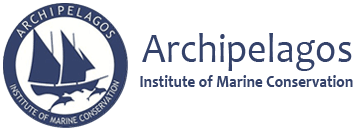Grandjean T., Schenke L., Tsimpidis T. Mapping of Posidonia Oceanica with Sentinel-2 imagery and downscan sonar obtained training data. 4th GEO BLUE PLANET Symposium 2018.
Abstract:
The seagrass meadows of the endemic Posidonia oceanica provide a key habitat for over 1000 fauna species and 300 flora species, while also they support numerous critical ecosystem services for humans. However, they are among the most threatened coastal ecosystems worldwide, with a declining rate of 1.5% per year. To counteract this decrease, seagrass meadows are protected by European laws such as the EU directive 2008/56/EC, however their poor and inaccurate mapping makes their effective conservation, a true challenge. In terms of resolution and costs, improvement of P. oceanica mapping is crucial to ensure effective conservation measures. Several studies have addressed methods for mapping P. oceanica. Using sonar is a suitable method to map small areas accurately, but on the other side it has the disadvantage that the area of interest must be entirely surveyed, which makes it a highly resource intensive process. The use of Sentinel-2-imagery enables larger areas to be covered in a shorter time but with a lower resolution than is provided by the sonar method. Furthermore, both methods require training and accuracy assessments by time-consuming field based surveys including snorkelling, diving or video transects. The current study represents a novel workflow that combines Sentinel-2 satellite imagery mapping and a supervised classification of P. oceanica obtained with a down scan sonar. The down scan sonar is used to collect field data of the environmental conditions. The conditions are correlated to the spectral settings of the atmospheric and water column corrected Sentinel-2 imagery for supervised classification. The combination of both techniques combines the benefits of each, saving time and costs by reducing the need for labour-intensive ground truthing methods. The remote sensing processing is entirely done by the Copernicus open source products SNAP and Sentinel-2 imagery. This novel workflow represents a low cost and time efficient solution to be used as a model to map P. oceanica for conservation purposes goals. The study was carried out in the eastern Aegean Sea, where the meadows are barely mapped, researched and protected.


